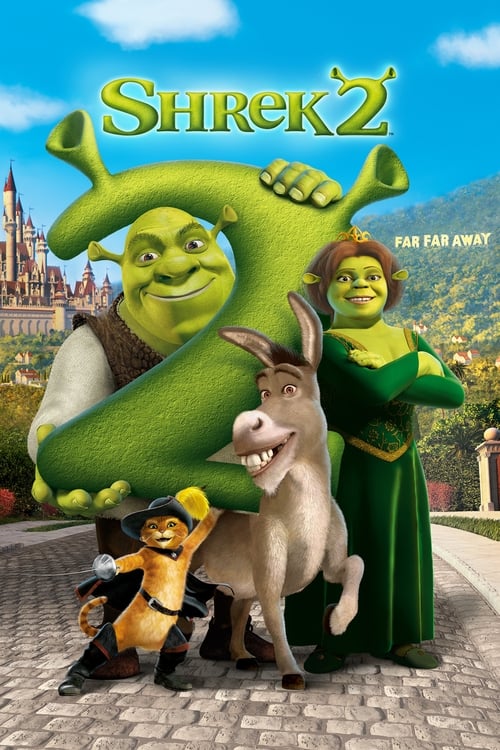Shrek 2 (2004) – A Fairy Tale Reimagined
Directed by Andrew Adamson, Kelly Asbury, Conrad Vernon
Introduction
Released in 2004, “Shrek 2” stands as a monumental sequel in animated film history, building upon the success of its predecessor while carving out its own unique space in the hearts of audiences worldwide. Directed by Andrew Adamson, Kelly Asbury, and Conrad Vernon, the film blends humor, satire, and heart into a tapestry that continues to enchant viewers of all ages.
Plot Overview
The story picks up where the first film left off, with Shrek and Fiona returning from their honeymoon to the land of Far Far Away. Their marital bliss is soon interrupted by a summons from Fiona’s parents, King Harold and Queen Lillian, who are unaware that their daughter has married an ogre. The couple, along with their loyal companion Donkey, embark on a journey to meet Fiona’s parents, hoping to gain their blessing.
Upon arrival in Far Far Away, Shrek and Fiona find themselves thrust into a whirlwind of royal protocols and societal expectations. The film cleverly satirizes celebrity culture and the superficiality of appearances through its portrayal of Fairy Godmother, a power-hungry antagonist who seeks to undermine Shrek’s marriage to Fiona.
Character Development
Central to the film’s success is its rich tapestry of characters, each uniquely flawed and endearing in their own way. Shrek, voiced by Mike Myers, evolves from a grumpy recluse to a devoted husband willing to confront his insecurities for the sake of love. Princess Fiona, voiced by Cameron Diaz, navigates her own journey of self-discovery as she reconciles her dual identity as both a princess and an ogre.
Donkey, portrayed by Eddie Murphy, provides comic relief while also grappling with issues of friendship and acceptance. New additions to the cast include Puss in Boots, voiced by Antonio Banderas, whose swashbuckling charm adds a layer of intrigue and humor to the narrative.
Themes and Social Commentary
Beyond its humorous facade, “Shrek 2” offers poignant commentary on themes of identity, acceptance, and the complexities of relationships. The film challenges conventional fairy tale tropes by celebrating characters who defy societal norms and embrace their true selves. Shrek’s journey from self-doubt to self-acceptance resonates with audiences of all ages, offering a powerful message about the importance of staying true to oneself in the face of adversity.
Animation and Visual Design
Visually stunning and meticulously crafted, “Shrek 2” showcases advancements in computer-generated imagery (CGI) that push the boundaries of animated storytelling. From the lush landscapes of Far Far Away to the intricately designed character animations, every frame of the film reflects the dedication and artistry of its animators.
Cultural Impact and Legacy
Upon its release, “Shrek 2” shattered box office records and garnered critical acclaim for its innovative storytelling and universal appeal. The film’s success paved the way for subsequent sequels and spin-offs, solidifying its place in pop culture history. Beyond its commercial achievements, “Shrek 2” continues to resonate with audiences as a timeless tale of love, friendship, and the power of inner beauty.
Conclusion
In conclusion, “Shrek 2” remains a cinematic masterpiece that transcends the boundaries of animation to deliver a heartfelt and humorous exploration of love, identity, and acceptance. Directed with finesse by Andrew Adamson, Kelly Asbury, and Conrad Vernon, the film stands as a testament to the enduring power of storytelling in its ability to entertain, enlighten, and inspire audiences around the globe.
As audiences continue to revisit the world of Shrek and his beloved companions, “Shrek 2” continues to remind us that true happiness lies not in conforming to societal expectations, but in embracing our authentic selves and celebrating the beauty of diversity.
